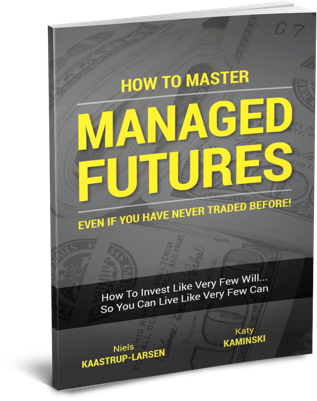What on Earth Is Happening to Volatility?

- Volatility is not behaving the way it used to and many investors are getting caught off guard.
- Structured products and retail trading are keeping volatility low even when markets are falling.
- Traditional hedging strategies are no longer working and investors need new ways to manage risk.
For decades, volatility has followed a familiar script: Stocks fall, volatility rises, and the investors holding protection reap the rewards. It was a rhythm as old as modern portfolio theory itself. The VIX, the so-called fear gauge, existed to confirm what everyone already felt: when markets panic, hedges pay.
But lately, the script isn’t playing out. When markets stumble, volatility barely moves. Sometimes, it even declines. This feels like a betrayal to many investors because the fire alarm is silent while smoke fills the room.
That silence isn’t a sign that the market is safer. It’s a sign that the mechanics have changed. Volatility is still there; it simply looks different. If you don’t understand how today’s volatility regime works, your defenses might not be true defenses at all.
What Changed?
In 2022, the S&P 500 dropped more than 18%. It was a slow, grinding descent, marked by months of choppy weakness, with the market reaching its low by mid-October. What surprised many wasn’t the decline itself but how volatility underperformed. It rose early in the year, but soon faded, even as the market kept falling. Looking back, this wasn’t an anomaly. It was a signal.
Volatility thrives on speed. If the market drops 10% in a day, vol surges because dealers must rebalance fast. Convexity, gamma, delta: All the Greeks light up. But when the market falls slowly, the system has time to adjust, hedges don’t trigger, options decay, and volatility, rather than rising, sometimes stalls or compresses. The pace of the move matters as much as the size.
It’s Not Just About Price, It’s About Positioning
Volatility responds not only to market moves but also to how the market is positioned when those moves happen.
In recent years, a massive volume of structured product issuance and retail options trading has tilted the entire volatility ecosystem. Trillions of dollars are now tied up in strategies that routinely sell volatility, not to speculate, but to generate yield.
Cash-secured puts, daily call overwriting, autocallable notes: All are ways of selling insurance when the odds of needing it feel low. These flows add supply to the options market, particularly at the index level, and suppress implied volatility even in the face of legitimate macro risk. In essence, the market has become its own vol dampener. And when everyone is selling protection, protection stops working.
The Hedging Paradox
In theory, hedges are supposed to kick in when markets fall, but if too many people are hedged, the volatility spike never comes. As a result, the hedge appears ineffective and gets abandoned.
This creates a dangerous loop. After a period of underperformance, investors stop buying puts, which removes downside support. The next decline hits harder and, eventually, when vol finally does spike, it’s not a subtle repricing. It’s a disorderly scramble.
This dynamic played out in 2016. Despite real macro stress with oil at $20 and high yield cracking, vol underperformed. Investors were over hedged, and the insurance didn’t pay out. Months later, they abandoned those protections, paving the way for 2018’s Volmageddon.
Volatility is less about risk and more about belief in how the system should behave. When that belief is shattered, reactions get more extreme.
Index Calm, Underlying Chaos
Another wrinkle in this new regime is the disconnect between index volatility and single-stock behavior. Correlation, once expected to spike in market stress, is now often subdued. Tech surges while cyclicals stall, and retail favorites skyrocket while blue chips grind sideways. This divergence, known as dispersion, is structural.
Retail and institutional flows are concentrated in single names. At the same time, structured product issuance and vol-selling are disproportionately focused on index options. That means index vol stays suppressed while individual stocks exhibit much more violent behavior.
For investors, this changes the utility of index hedges. A broad-market put may no longer protect a portfolio full of names that are swinging independently. The diversification math breaks down.
The Macroeconomic Shift
The volatility of the last two decades was anchored by three assumptions: inflation is low, rates fall during recessions, and central banks will backstop markets. That regime enabled consistent vol suppression and rewarded those who sold risk. But we are no longer in that world.
Inflation is proving sticky, protectionist policies and tariffs are returning, and interest rates have climbed and may stay higher for longer. The Fed’s ability to cushion market drawdowns is limited, not just politically, but structurally.
This creates a choppier, more policy-sensitive market. Volatility is often compressed on the downside because policymakers intervene, but it spikes on the upside when confidence returns, and new policies disrupt pricing. This creates what some have called a "rangy" market, where equities move sideways in wide bands, and volatility alternates between being artificially cheap and unexpectedly expensive.
Where the Real Risks Lie and What Investors Should Do
Structured products are often sold as safe yield strategies, but their hidden risk is in the crash insurance they embed. Most of these notes are designed to pay a steady coupon unless the underlying index drops sharply. If that happens, the product “knocks in,” and the investor is exposed to full downside.
To hedge this, banks sell long-dated puts, suppressing the price of crash protection. But if markets fall and those strikes are breached, banks must buy back that vol quickly. That unwind can create a violent, late-stage vol spike. By the time it happens, the decline may already be 10%–15% deep. The insurance activates after the pain.
In this regime, traditional hedges may no longer work the way they used to. But that doesn’t mean volatility is useless; it just needs to be used differently. Some approaches gaining traction include:
- Long-dated crash convexity: Buying deeply out-of-the-money puts in indexes or popular single names, particularly where structured vol selling is most active.
- Curve trades: Taking advantage of dislocations in the volatility term structure, buying vol in one part of the curve while selling it in another.
- Gamma harvesting: Owning short-dated options during volatile intraday periods, profiting from small moves rather than waiting for a big one.
- Cross-asset vol exposure: Rates, gold, and FX markets are showing more consistent movement than equities. Volatility is migrating, not breaking.
These strategies aren’t just for hedge funds. They’re becoming essential for institutions and allocators seeking true diversification, not just a new flavor of equity beta wrapped in illiquidity.
The Bottom Line
Volatility is responding to new incentives, new structures, and new policies as the market has changed. The assumptions baked into 60/40 portfolios, into private equity models, into traditional hedging frameworks: They all need reexamination. We’re not just in a higher-risk environment, we’re in an environment where risk tends to hide better.
If the old signals no longer flash, it doesn’t mean danger is gone. It just means you need a new set of tools to see it.
This is based on an episode of Top Traders Unplugged, a bi-weekly podcast with the most interesting and experienced investors, economists, traders and thought leaders in the world. Sign up for our Newsletter or subscribe on your preferred podcast platform so that you don't miss out on future episodes.
Most Comprehensive Guide to the Best Investment Books of All Time

Most Comprehensive Guide to the Best Investment Books of All Time
Get the most comprehensive guide to over 500 of the BEST investment books, with insights, and learn from some of the wisest and most accomplished investors in the world. A collection of MUST READ books carefully selected for you. Get it now absolutely FREE!
Get Your FREE Guide HERE!




